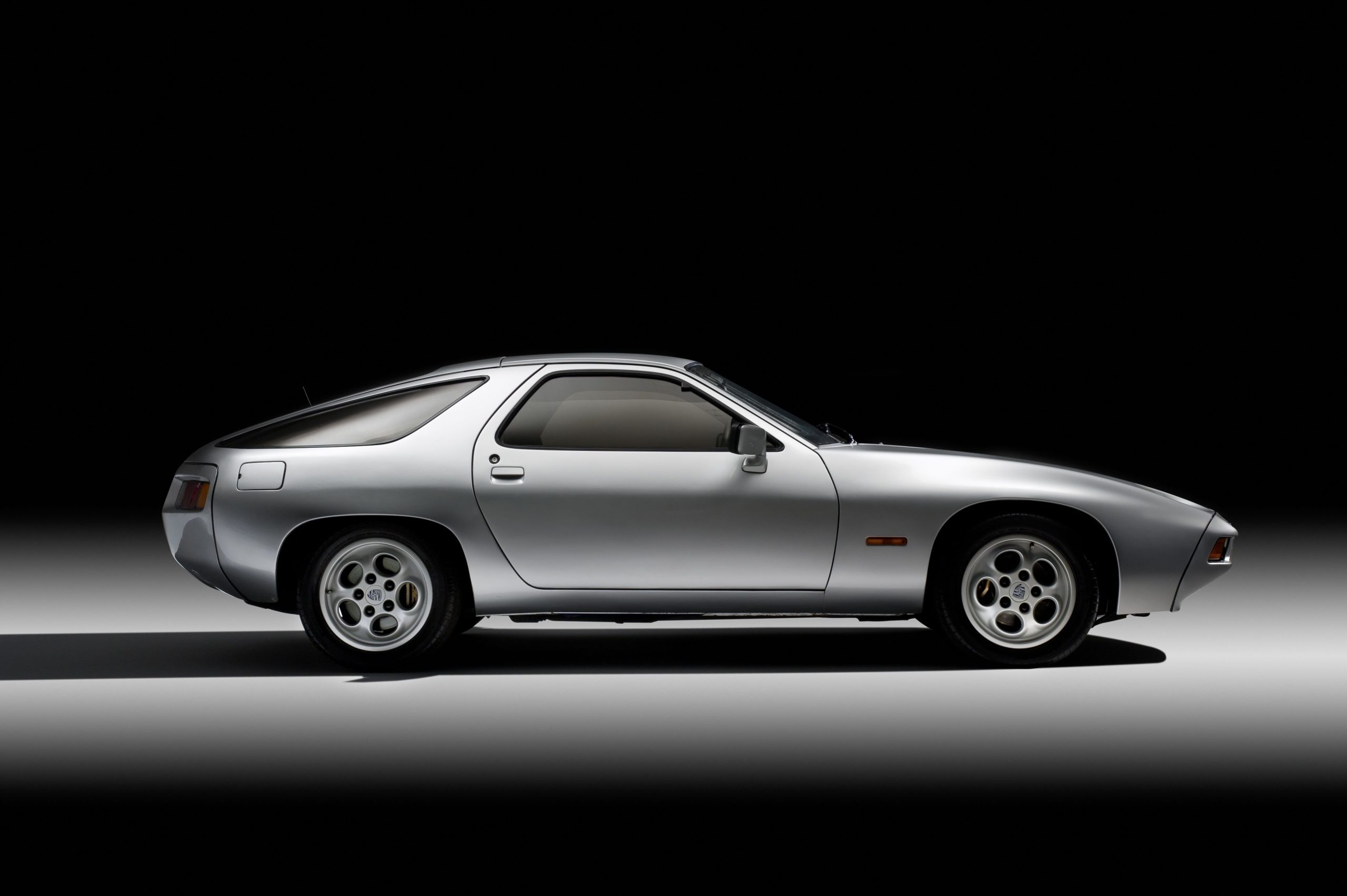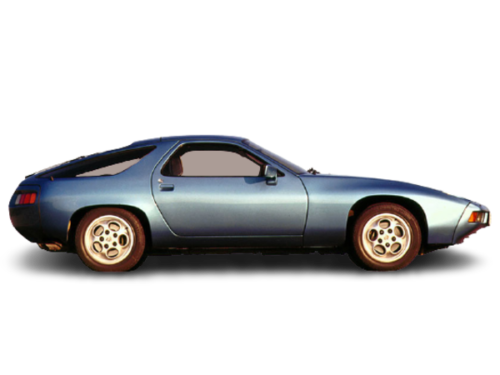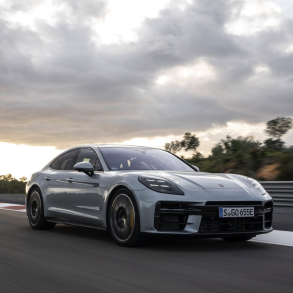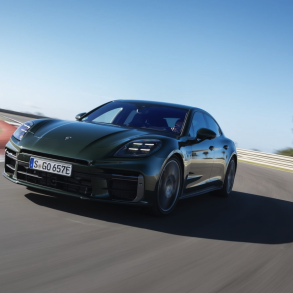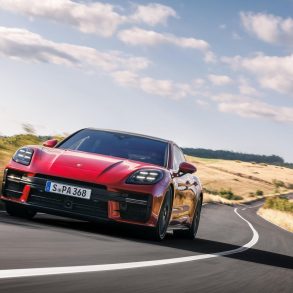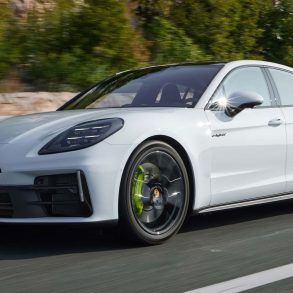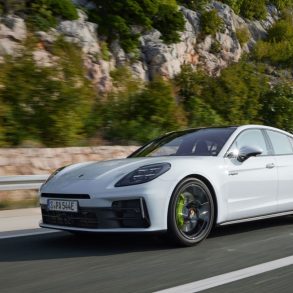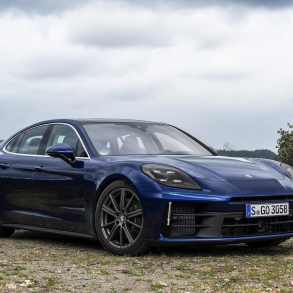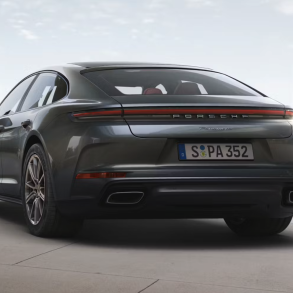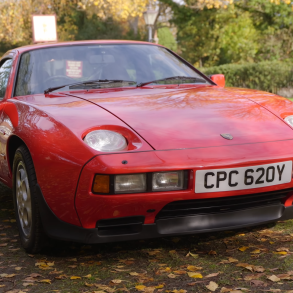(1978 – 1982) Porsche 928 – Ultimate Guide
In March 1977, the production version of the 928 debuted at the Geneva Motor Show, the first of a new generation of Porsche cars. It had a similar body to the 924, but was powered by a water-cooled V-8 engine. Not only was it a different design compared to the 911 model, but its engine was also cooled differently. Later that year, it became the first sports car to win the European Car of the Year award. In 1978, the 928 was crowned Car of the Year.
The base model Porsche 928 featured a large, front-mounted and water-cooled V8 engine driving the rear wheels. Originally displacing 4.5 L and featuring a single overhead camshaft design, it was rated at 219 hp for the North American market and 237 hp in other markets. Porsche upgraded the engine from mechanical to electronic fuel injection in 1980 for US models. Power remained the same, but torque was up as a result.
The Background
Although the 911 had only entered production in mid 1964, by the early 1970s Porsche were concerned the model would soon be at the end of its development life. There were also murmurings that rear-engined cars would be outlawed from sale in the USA which compelled management to consider a replacement.
Porsche thought a larger, more conventional Gran Turismo would have a broader appeal than the quirky and sometimes difficult to handle 911. Accordingly, in 1971 work began on a front-engined design study to potentially replace the 911. The resultant 928 had a 2+2 seating layout, rear-wheel drive and a large displacement V8 cooled by water instead of air.
Such a machine would continue Porsche’s inexorable move upmarket. The four cylinder 356 had started the trend, its Volkswagen components gradually being phased out in favour of better quality Porsche parts. Then the 911 arrived: it had a bigger six cylinder engine and was a considerable step up in price. The 928 would be a natural progression and establish Porsche as a builder of world class luxury GTs.
Unveiled at the Geneva Motor Show in March 1977, the 928 was initially sold alongside the 911 and entry level 924 (a four cylinder front-engined GT that started life as a collaboration between Porsche and Volkswagen). In 1975 Porsche had also introduced the 930: a turbocharged 911 that wasn’t even on the drawing board when the 928 got the green light.
Originally conceived as a limited production homologation special, demand for the 930 greatly exceeded the 400 units needed to go racing and Porsche made it a permanent fixture in their model line up. As a result, the firm ended up with two flagship models that inevitably took sales away from one another.
The Details
The Porsche 928 got an all-aluminum 4.5 liter 16-valve SOHC V8 designed by Porsche. This engine also featured the world’s longest (Gilmer-type and toothed) timing belt in a production vehicle – it measures nearly 7 feet if laid out. The engine was water-cooled.
Although the mid 1970s Oil Crisis made Porsche consider other, smaller engines for the 928, the lusty M28 was smooth, powerful and torquey. It also had great development potential. An all-alloy water-cooled 16 valve motor, the M28 featured a single overhead camshaft for each bank of cylinders and wet-sump lubrication. Displacement was 4474cc thanks to a bore and stroke of 95mm and 78.9mm respectively. Bosch K-Jetronic fuel-injection was employed along with a conservative 8.5:1 compression ratio. European market engines came in two types: M28/01 if coupled to a manual gearbox or M28/02 for automatics. Peak output was 240bhp at 5500rpm and 257lb-ft at 3600rpm. 928s destined for the USA and Japan came with engine types M28/03 (manual) and M28/04 (automatic). As a result of an exhaust gas recirculation air pump and catalytic converter, output was downrated to 230bhp at 5250rpm and 254lb-ft at 3600rpm.
At its unveiling the car stunned the world and was received to critical acclaim and controversy – the 928 was promptly awarded Car of the Year for it’s many innovations such as the aluminum engine block and heads; and the ’Weissach axle” (named in honor of the Porsche R&D center where it was created). The four-wheel independent suspension and the disc-brakes in all corners helped in stopping power. Apart from the transaxle system, the car featured a so-called Weissach axle, that corrected the rear track, to allow higher cornering speeds.
The goal of the Weissach axle was to eliminate lift-throttle oversteer by allowing the rear suspension to actually adjust itself during cornering manuevers. The Weissach axle is one of the most noted features of the marque and has been adapted across the model line-up. Double disc clutch info and torque tube. The 928 battery is attached to the rear transaxle to help dampen vibration. Thus equipped with a front-engine, rear transaxle layout the 928 has near perfect weight balance distribution of 50/50 front to rear.
Front suspension was via a multi-link MacPherson strut arrangement while at the back Porsche fitted their brand new Weissach axle. An evolution of the semi-trailing arm configuration, the Weissach axle replaced the front pivot bushing of a trailing arm layout with a short link that allowed the suspension to adjust itself during cornering. The result was dramatically reduced lift-off oversteer and much improved stability. Coil sprung shock absorbers were fitted at each corner along with anti-roll bars at either end. Ventilated brake discs had a diameter of 282mm at the front and 289mm at the rear. Wheel size depended upon which gearbox was specified. Manual cars rode on 16-inch diameter rims while 928s with the automatic option came with 15-inch wheels. Width of the Teledial alloys was 7-inches all round regardless of which transmission was used. An 86-litre fuel tank was fitted underneath the boot floor. In the engine bay was Porsche’s first production V8: the Type M28
The exterior was like a GT, with a long and flat hood, a 2+2 cabin, and a big window for the tailgate. One of the most characteristic features of the car were the pop-up headlights. They were exposed and tilted back when they were not needed and tilted forward to a vertical level when they were lit. The 928 was built on a hot-dip galvanised steel bodyshell with a 2500mm wheelbase.
Inside, the 928 featured bolstered seats in the front and two seats in the rear. The center tunnel was big, due to the gearbox placed in the back. The instrument cluster was different than the one found in the 911. Since it was a luxury GT, it was fitted with the comfort features of that time, including air-conditioning.
Original 928 Evolution
The original Porsche 928 ran from 1978 till 1982. The original Porsche 928 is most easily recognized by the absence of a rear spoiler. It looks cleaner and sleeker with the back being flush and following the front lines perfectly. The standard wheels for the original run was the five-hole wheels (think Countach) and most cars had them. The other difference was the engine which we described above. Below we have outlined some of the differences between models in the early years.
1978 MY Porsche 928
The initial model. It had a 4.5 L (275 cu in), 16 valve engine with Bosch K-Jetronic fuel injection. See full 1978 model year specs.
1979 MY Porsche 928
In 1989, the battery box integrated as part of the body, was previously mounted to gearbox. The gearbox shocks were deleted for 1979. See full 1979 model year specs.
1980 MY Porsche 928
In 1980, the 928 got a higher 10.0:1 compression ratio 4.5 liter engine (except North America). It had the same power output of 230 bhp but did have more torque, going from 253 lb-ft @ 3600 rpm to 265 lb-ft @ 4000 rpm. North America also saw the introduction of Bosch L-Jetronic injection. Manual gearbox changed during model year requiring shorter torque tube and different rear subframe. See full 1980 model year specs.
In 1980, the U.S. 928 received the larger 4.7-liter V-8, which made 230 hp. Europe saw the addition of the 928 S, which also received standard front and rear spoilers to improve aerodynamics and larger brakes. Engineers also increased the engine’s displacement to 4.7-liters, bumping power up to around 300 hp for Europe and 229 hp for the U.S. The name was changed to 928 S in Europe, but America didn’t get the updated S until 1983. Note, this post does not cover the 928 S in detail. We have the 928 S covered in full here.
1981 MY Porsche 928
In 1981, Porsche introduced the U.S only Competition Package. 1981 Competition package includes S type front and rear spoilers, sport seats. The main feature of the Euro S model, namely the 4.7 liter V8, would not make it’s U.S. appearance until 1983. A special 928 Weissach edition was available and, similar to the 911 Weissach edition, featured champagne gold metallic paint, matching brushed gold alloy wheels, two-tone interior and the extremely collectible three-piece Porsche luggage set. Only 205 such cars were produced. Note that US-spec 928s also got engines with new type numbers (M28/15 for manual or M28/16 for auto) but no major changes were actually made. See full 1981 model year specs.
1982 MY Porsche 928
Several improvements were made for the 1982 model year 928. A new vibration damper was added to torque tube between the 2nd and 3rd support bearing on manual gearbox cars and behind 2nd bearing on automatic gearbox cars. Reverse gear lock was added to manual gearbox. The 4.5 L model dropped from production at the end of the model year. US “Competition Package” option dropped from production at the end of the model year. The 1982 model year was the last for the 4.5-litre 928.
In the 1982 model year, two special models were available for different markets. 202 “Weissach Edition” cars were sold in North America. Unusual features were champagne gold metallic paint, matching brushed gold flat disc wheels, two-tone leather interior, a plaque containing the production number on the dash and the extremely collectible three-piece Porsche luggage set. It’s believed these cars were not made with S spoilers even though these were available in U.S. during this time period as part of the “Competition Group” option. The “Weissach Edition” option was also available for the US market 911 for the 1980 model year and 924 for the 1981 model year. 141 special “50th Jubilee” 928 S models were available outside the U.S. and Canada to celebrate the company’s 50-year existence as a car manufacturer.
See full 1982 model year specs.
What They Said
The press were generally impressed with the 928s performance. It combined GT comfort and luxuries with a true Porsche “driver’s car” attitude. Autocar called it a “grown-up supercar” and that about summed up the car. Porsche’s design and development efforts paid off during the 1978 European Car of the Year competition where the 928 won against the BMW 7-series and the Ford Granada. The 928 is the only sports car so far to have won this competition, where the usual winners are mainstream hatchbacks and saloons from major European manufacturers. Proof of how advanced the 928 was compared to its contemporaries.
Manufactured
Production got underway in September 1977 for the 1978 model year. The first right-hand drive 928s arrived in February 1978. The first run ran till 1982.
Units Made
Between 1978 and 1982 there were 17,669 Porsche 928s made.


